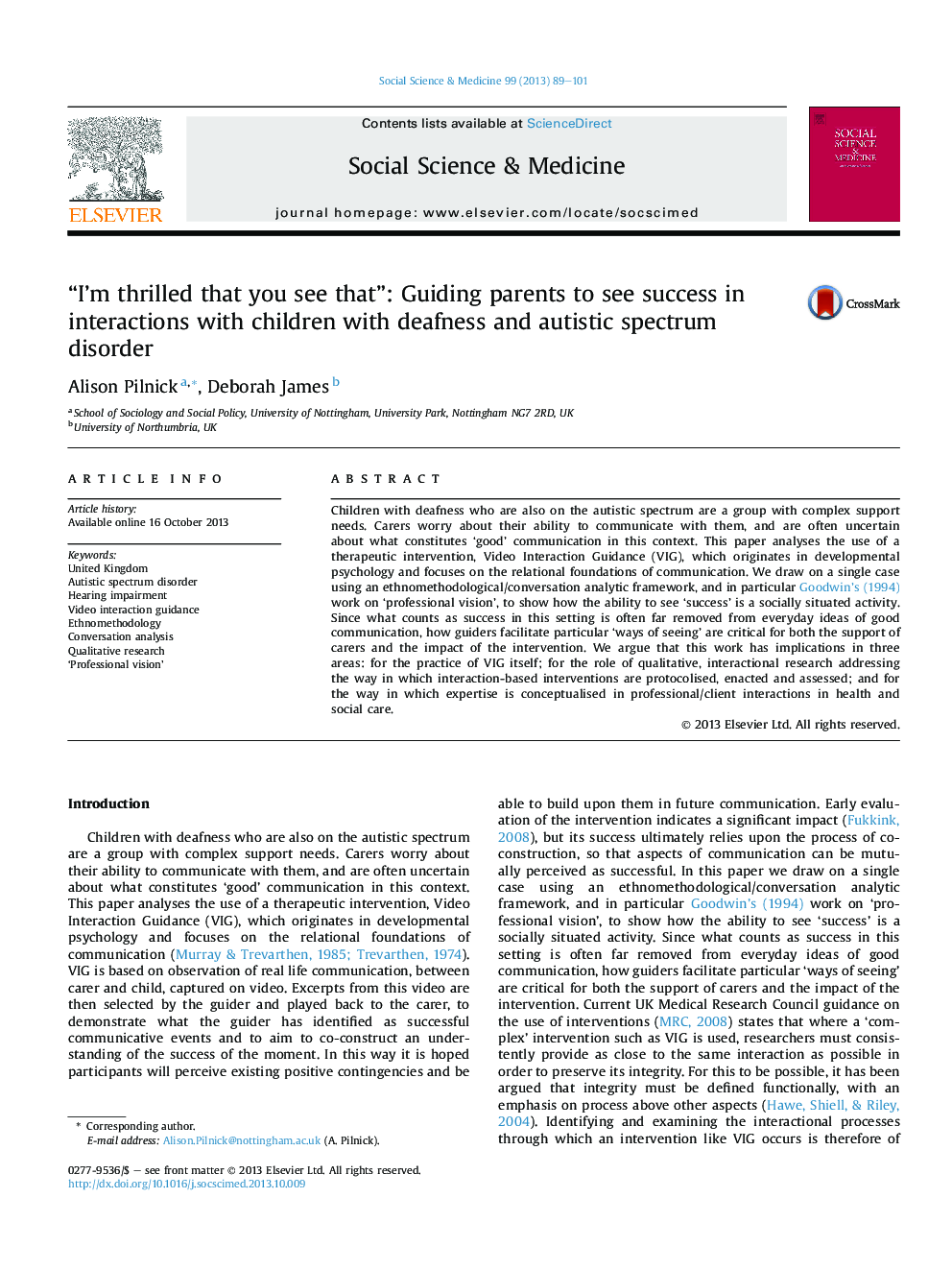| Article ID | Journal | Published Year | Pages | File Type |
|---|---|---|---|---|
| 7336347 | Social Science & Medicine | 2013 | 13 Pages |
Abstract
Children with deafness who are also on the autistic spectrum are a group with complex support needs. Carers worry about their ability to communicate with them, and are often uncertain about what constitutes 'good' communication in this context. This paper analyses the use of a therapeutic intervention, Video Interaction Guidance (VIG), which originates in developmental psychology and focuses on the relational foundations of communication. We draw on a single case using an ethnomethodological/conversation analytic framework, and in particular Goodwin's (1994) work on 'professional vision', to show how the ability to see 'success' is a socially situated activity. Since what counts as success in this setting is often far removed from everyday ideas of good communication, how guiders facilitate particular 'ways of seeing' are critical for both the support of carers and the impact of the intervention. We argue that this work has implications in three areas: for the practice of VIG itself; for the role of qualitative, interactional research addressing the way in which interaction-based interventions are protocolised, enacted and assessed; and for the way in which expertise is conceptualised in professional/client interactions in health and social care.
Keywords
Related Topics
Health Sciences
Medicine and Dentistry
Public Health and Health Policy
Authors
Alison Pilnick, Deborah James,
